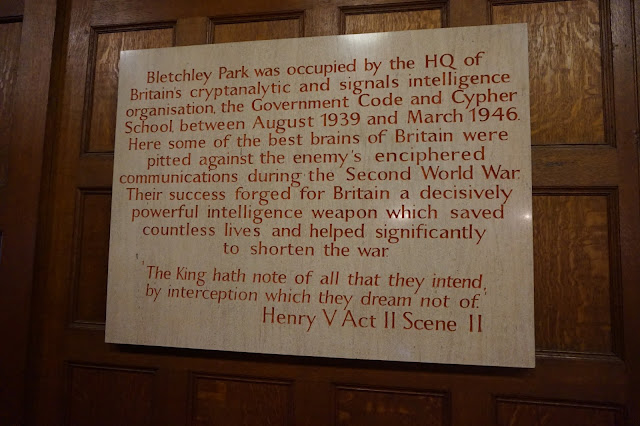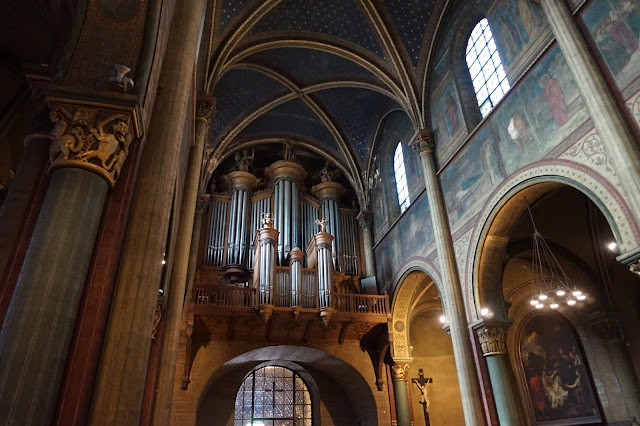Having concluded my mathematical travels, and desiring this blog to work as a reference for my students and to be comprehensible for others who come across it, I feel it's important to put up this final post in order to round things out and provide an overview. This will serve as a conclusion for those of you who have followed me on my travels, and it will serve as an introduction for those of you just now finding this blog (including my future students).
 |
| Tram to from the airport into Edinburgh - my first stop in Europe |
This blog covers my mathematical travels from spring 2016, which were undertaken as part of a sabbatical focused on the history of mathematics from the Renassaince to the present in northern Europe. The map at the top of the post shows my stops. These travels were profoundly impacting to me, and I believe the outcomes will resonate throughout my teaching over the rest of my teaching career. Multiple goals were achieved through this travel, but one of the biggest is that of having walked in the footsteps of the famous mathematicians from the last 500 years in such a way that I will be able to bring them to life for my students. I hope that through doing this I will be able to help make math more approachable and interesting to my students and to people in my community by truly putting a human face on mathematics.
I hope this final post relating to my mathematical travels in northern Europe will serve as a sampler of what is to be found in the previous posts of this blog. I will include some links here to other posts, as well as a wide variety of pictures. There is also a search bar on the top left, and a list of labels on the right that can be used to search for specific topics, places and people of interest. ENJOY!
Mathematician
Mary Somerville (1780-1872), who eventually tutored
Ada Byron (yes,
that Byron), who was to become a mathematician herself. Mary grew up in Burntisland, Scotland. Part of what inspired Mary to study mathematics was the natural world around her - especially stars she could see out of her bedroom window and the Burntisland beach and tide pools near her childhood home.
My intent was to walk in the footsteps of the mathematicians I was studying, and I did that very literally! I wanted to experience what inspired them so I can use it to inspire others!
Mary had extended family who lived further south in Scotland, in the borderland town of Jedburgh. Her uncle was the minister at Jedburgh Abbey (seen in ruins above) and lived on the Abbey grounds. Mary and her cousins would swim in the Jedwater (also seen in the picture above).
As well as having walked in Mary's footsteps, I also accessed her papers and read correspondence between the Somerville and Byron/Lovelace families housed in Oxford's Bodleian Library. The lives of Mary Somerville and Ada Byron Lovelace opened up before me in amazing ways as I read their letters to each other.
 |
| The Radcliffe Camera - one of the Bodleian Reading Rooms in Oxford |
 |
| A folder containing correspondence between Mary Somerville and Ada Byron Lovelace |
While in Oxford I also
accessed the archives at Queen's College Library. Here I found the rumors that mathematicians are lazy to be confirmed for me! In reading a first edition copy of Robert Recorde's
Whetstone of Witte, I came across the place where the equals sign was used for the first time. Recorde wrote that he decided to create the equals sign because he was tired of the "tedious repetition"of writing the words "is
equalle to" between both sides of all of his equations. He created that small symbol = that we all recognize immediately today. He decided to make the symbol of two parallel lines of the same length, as he put it, "
bicaufe noe.2. thynges can be moare equalle." (The reading of 16th century English proved a bit challenging, but in a fun way, like a treasure hunt!)
 |
| The view from my table at Queen's College Library, Oxford |
 |
| My table at Queen's College Library, Oxford, with the 1557 first edition Whetstone of Witte waiting for me |
I chose each of my destinations solely with regard to connections with mathematics and mathematicians. Another mathematician I was interested in at Oxford is a person most of us know better as a literary figure:
Lewis Carroll. Actually, his "day job" was that of being an Oxford don of mathematics - on the side he was a writer and photographer - very accomplished in those areas!
Carroll's Alice stories were inspired by a real person, Alice Liddell, the young daughter of Carroll's dean at Christ Church, Oxford. Carroll often took Alice and her sisters boating and also to the then newly opened Oxford University Museum of Natural History (see above), where they encountered some of the "beasts" that make an appearance in his works (see below).

Lewis Carroll is not the only whimsical mathematician I came across in my study and travels, another such is
Dr. John Dee (1527-1608). Given what I've learned I can't believe I hadn't come across him before; he's everywhere in popular culture - appears frequently in modern fantasy, horror, and historical fiction novels, may have been the model for
Prospero in Shakespeare's Tempest and Christopher Marlowe's
Doctor Faustus. He even shows up in an Iron Maiden song and a PlayStation video game!
Dr. Dee was an adviser to Queen Elizabeth I. At the time in which he lived science and magic were not well-distinguished, and scholars such as himself could be expected to do such things as draw up horoscopes and cast out demons. Though this was expected, it put men such as he in danger of being associated with the occult, which did happen to him. He then fell out of favor with the Queen and died in poverty and obscurity. And yet, as we've seen, he lives on in literature, music, games and even an opera!
Pictured below are some of his mystical implements, including his crystal ball and obsidian scrying mirror. These items were on display at London's Royal College of Physicians, on loan from the British Museum.
Dee is not the only mathematician of this era to have been considered by some to be a sorcerer. Another such is
John Napier (1550-1617), a Scottish nobleman and elder in the Presbyterian Church, whose castle tower is pictured further down in this post.
As well as visiting beaches, museums, libraries and universities where mathematicians lived, worked and gained inspiration, I also visited gardens, woodlands, crypts, castles, cemeteries, cathedrals, homes and classrooms associated with mathematicians and their lives - some photographs of which follow this paragraph. Also included in the posts on this blog are commentary about the very real joys and very significant struggles of traveling abroad for the first time and traveling solo. Although the travels were independent and solo there were three cities in which I met with fellow mathematicians who proved to be of tremendous help to me, so this post closes with pictures of each of them to whom I feel tremendous gratitude!
 |
| Tuileries Garden, Paris, where Mary Somerville spent time convalescing |
 |
| Forest of Gottingen, Germany where David Hilbert walked with colleagues and students |
 |
| Crypt of the Pantheon in Paris - tomb of Joseph Louis LaGrange (top, left, back) |
 |
| Merchiston Tower - which remains of the castle of John Napier |
 |
| Pere Lachaise Cemetery, Paris - burial place of Germain and Fourier |
 |
| Window dedicated to George Goole in Lincoln Cathedral |
 |
| View out of Sir Isaac Newton's bedroom window of the famous apple tree that he said inspired him |
 |
| Cavendish Laboratory Classroom of James Clerk Maxwell - Cambridge |
 |
| Dr. Piers Bursill-Hall & doctoral student Richard Chapling - Centre for Mathematical Sciences - Cambridge |
 |
| Dr. Samuel James Patterson - Mathematisches Institut - Gottingen, Germany |
 |
| Dr. Manfred Stern of Halle, Germany and I having lunch and talking math at the famous Auerbachs Kellar, Leipzig |













































































